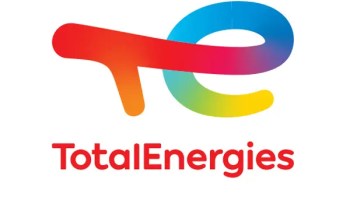The Chief Executive Officer of the Nigerian National Petroleum Company Limited (NNPC), Mele Kyari, has said that though the nation plans to hit a production target of 1.8 million barrels per day in 2023, but not all will be exported.
The NNPC chief disclosed this while answering questions during a webinar that was reported by S&P Global Commodity Insights.
He also stated that with the continuous economic growth in Africa and the reopening of the Chinese economy, report that global crude oil demand may collapse soon is not realistic.
According to him, Crude and condensate production was 1.519 million bpd at the end of December and the target is 1.8 million bpd by the end of 2023, but “we know it is practical to go to 2.2 million,” Kyari noted.
Some of the new productions would be diverted to two domestic refineries being upgraded that are expected to begin operations later in 2023, he said.
Nigerian crude output alone rose to 1.33 million bpd in December, the highest since April, after the return of key grades Forcados and Brass River, according to the monthly Platts survey by S&P Global Commodity Insights.
Nigeria lost around 500,000 bpd of oil production to theft in 2022, according to government estimates. Nigeria’s Minister of State for Petroleum Timipre Sylva has said the battle against oil thieves was gradually being won.
He said China’s eventual reopening and slow crude supply growth means the global oil market would be in shortage, Kyari who also serves on Nigeria’s Organisation of Petroleum Exporting Countries (OPEC) delegation said.
OPEC and its allies, including Russia, opted to slash production quota by two million barrels per day (bpd), from November through the end of 2023, in anticipation of slowing demand and the prospect of recessions in key economies.
The decision was despite the European Union’s plan to impose an embargo on imports of Russian crude from December and refined products from February.
“I do not see how this demand will collapse because countries are coming back. China is recovering from COVID-19 and a number of countries, particularly sub-Saharan African countries, are growing.
“These economies are growing very, very fast against all odds. That means more consumption,” Kyari said.
The OPEC+ alliance reaffirmed the decision at its December meeting and a nine-country monitoring committee, on which Nigeria sits, will convene February 1, to review market conditions and, if needed, recommend any changes to production volumes.
Since the quotas were cut, Platts-assessed Dated Brent has fallen from above $100 per barrel in early November to below $80 per barrel in recent days.
Kyari said there was little evidence that the oil market was facing a shortage from the measures.
“While sanctions have impacted how much crude Russia has been able to export, Middle Eastern producers have not lost market share, he said. “What’s really changed is the flow of trade,” he added.
Crude and condensate production was 1.519 million bpd at the end of December and the target is 1.8 million bpd by the end of 2023, but “we know it is practical to go to 2.2 million,” Kyari noted.
Some of the new production would be diverted to two domestic refineries being upgraded that are expected to begin operations later in 2023, he said.
Nigerian crude output alone rose to 1.33 million bpd in December, the highest since April, after the return of key grades Forcados and Brass River, according to the monthly Platts survey by S&P Global Commodity Insights.
Also, Equatorial Guinea Oil Minister, Gabriel Mbaga Obiang Lima, speaking on a separate webinar, said the OPEC+ coalition was closely monitoring the Chinese economy and the Russia-Ukraine war.
China has relaxed some of its pandemic restrictions ahead of the Lunar New Year holiday, though analysts are divided on whether rising infection rates in the country will offset any increase in oil demand for transportation.
“We are all looking at this new opening of China,” Obiang said. “Travelling is going to be a key thing. If the Chinese New Year concludes and there is no major concern about infections, that’s going to be a sign that things are going in a positive way,” he stressed.
As for Russia’s invasion of Ukraine, Obiang said it was still unclear how long hostilities will continue.
The EU began an embargo on seaborne imports of Russian crude in December and is set to do the same with refined products in February. The G7 has also implemented a $60 per barrel price cap on Russian crude cargoes, though key Russian grade Urals has traded well below that price in recent weeks.
Meanwhile, a survey by S&P Global Commodity Insights has revealed that members of OPEC and its allies known as OPEC+ increased crude oil production by 140,000 barrels per day to 42.71 million bpd in December 2022.
According to the survey, Nigeria led OPEC-13 countries to pump 28.98 million barrels per day in December, while 10 non-OPEC partners (including Russia) produced 13.73 million bpd. This led to a combined production output of 42.71 million barrels per day for the month under review.
The survey also confirmed that Nigeria had recoveries in its loadings of major grades – Forcados and Brass River, while maintenance at the Bonga Field was completed in mid-November.
According to the survey by S&P, OPEC’S output still massively lags behind its production targets, with the gap at 1.80 million barrels per day in December 2022, due to technical or financial difficulties in sustaining output.





